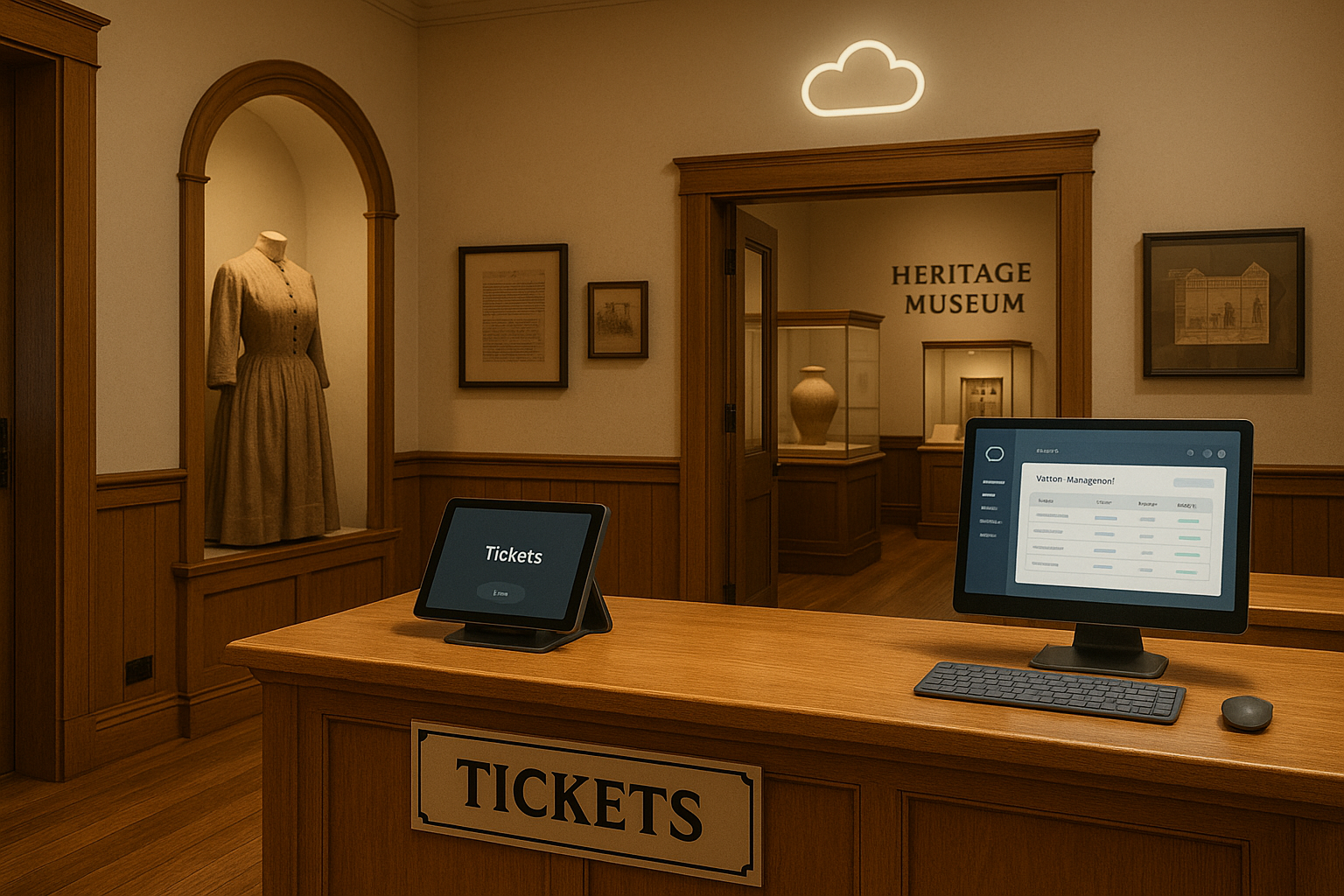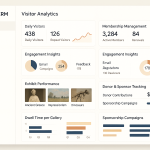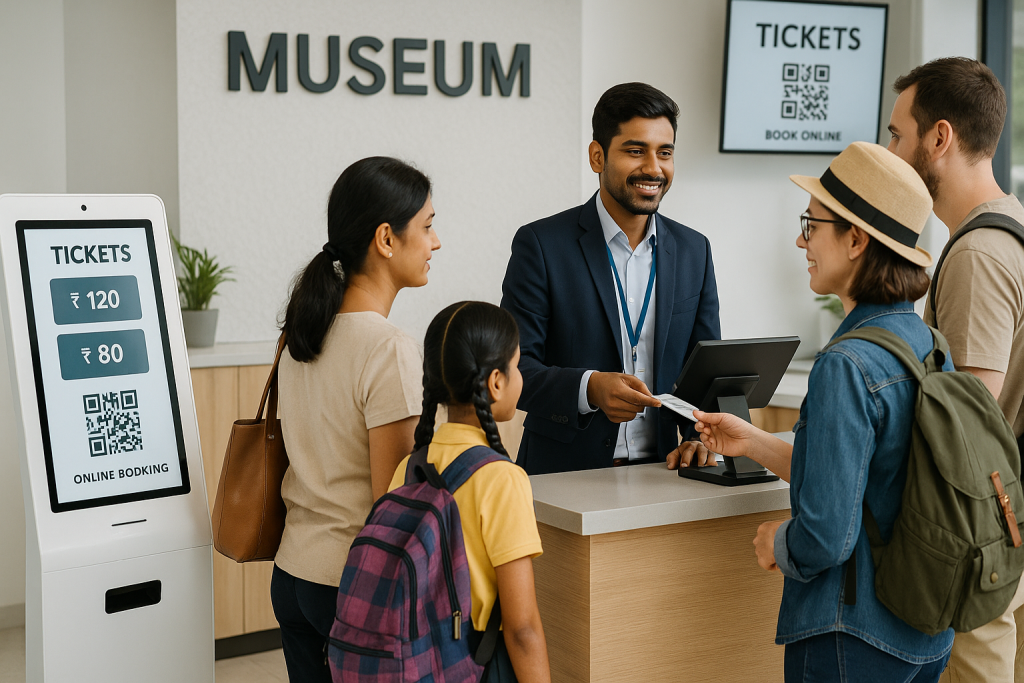Running a small museum is not easy. You care about history, culture, and community. But visitors today expect more than displays. They want smooth entry, easy booking, and engaging experiences.
Here is the problem. Many museum operators fear digital tools. You might think they are complex, costly, or require an IT team. That is not true anymore.
The best museum management software is simple, affordable, and designed for non-technical staff. It helps you manage ticketing, exhibits, and visitor engagement without stress. You do not need servers, coding skills, or a large budget.
In this blog, you will learn how low-tech, high-impact digital tools can transform your museum. We will explore how cloud-based solutions for museums reduce complexity and help you grow.
What Challenges Do Small Museums Face in Going Digital?
Small museums often hesitate to adopt digital tools. The biggest reason is fear of complexity. You may worry that software will take more time to manage than it saves.
Another challenge is the lack of IT staff. Large museums can hire experts. Smaller institutions usually rely on volunteers or a few dedicated employees. This makes advanced systems feel out of reach.
Budgets are also tight. You want affordable tools that deliver clear value. High costs make many operators stick with paper logs, manual ticketing, and outdated spreadsheets.
At the same time, visitor expectations are rising. Guests want online booking, mobile tickets, and interactive experiences. Meeting these demands without digital tools feels overwhelming.
These barriers are real. But with the best museum management software, designed for simplicity, you can overcome them. Small changes in technology can make a big impact.
Why Does “Low-Tech, High-Impact” Matter for Museums Like Yours?
Digital change does not need to be complicated. For small museums, the goal is not to compete with big institutions. The goal is to make daily work easier and visitors happier.
Low-tech, high-impact tools do exactly that. They are simple to learn and easy to use. You and your team can focus on telling stories and managing exhibits, not fixing software.
Small steps like online ticketing or basic visitor data tracking bring visible results. They save time, cut errors, and create smoother experiences for guests.
This approach also fits your budget. You invest only in features you need. That makes digital growth realistic, without stress or heavy costs.
What Features Should You Expect from the Best Museum Management Software?
Not all tools are built for small museums. When you choose the best museum management software, look for features that are simple, practical, and affordable.
First, ticketing and booking should be easy. Your visitors must book online without long steps. Staff should confirm and manage tickets in seconds.
Second, cloud-based solutions for museums make access simple. You can log in from anywhere. No servers. No special hardware. Just internet and a device.
Third, reporting should be clear. The system must show visitor numbers, revenue, and trends. This helps you make decisions with facts, not guesswork.
Fourth, collections and exhibit management should be stress-free. Upload details, track artifacts, and update records without needing technical skills.
Finally, pricing should match small museum budgets. Look for software that grows with you. Pay for what you need today, and add features later.
The right tool balances all these points. It supports your work instead of adding to it. That is what makes software truly useful for small museums.
How Can Cloud-Based Solutions for Museums Reduce Complexity?
Technology feels hard when it needs servers, cables, and on-site support. Small museums rarely have that. This is where cloud-based solutions for museums make a big difference.
With cloud tools, you only need an internet connection. You log in from any device, laptop, tablet, or phone. Updates happen automatically. You never worry about installing new versions or fixing errors.
Security is also stronger. Data is stored safely in the cloud, with backups you do not manage. That means less stress about losing visitor records or ticket data.
Cloud systems also scale with you. If your museum grows, you simply add more features. No expensive setup or IT team required.
Most important, cloud tools keep things simple. Staff and volunteers can learn them fast. You focus on visitors and exhibits, not on maintaining software.
Which Small Steps Can You Take Today to Go Digital?
You do not need to change everything at once. Small steps can make a big impact.
Start with online ticketing. It reduces queues, avoids errors, and makes entry smoother for visitors.
Next, use cloud-based scheduling for staff and volunteers. Everyone can see shifts, updates, and reminders in one place. No more confusion or missed duties.
Add simple tools to collect visitor feedback. A digital form or QR code works better than paper slips. It helps you understand what guests enjoy and what can improve.
Once you are ready, expand to collections and CRM. Each step builds confidence. Bit by bit, your museum becomes more efficient and visitor-friendly.
Must Read: Why EveryTicket is India’s #1 Choice for Museum Revenue Growth
How Do You Overcome the Fear of Technology in Your Museum?
It is normal to feel nervous about new tools. Many museum operators think software will be too complex. The truth is, the best museum management software is built for people like you.
Start with ease of use. Choose software with a clean, simple design. If you can book a ticket online as a visitor, you can manage the same process as an operator.
Training also matters. Look for providers who offer quick guides, video demos, or even live support. This makes learning less stressful for staff and volunteers.
Adopt one feature at a time. Begin with ticketing, then add reporting or collections later. Step-by-step use removes pressure and builds confidence.
Finally, rely on strong customer support. When you know help is just a call or email away, fear fades. Technology feels less like a risk and more like a trusted partner.
What Success Stories Show Small Museums Can Thrive Digitally?
Digital tools already help small museums succeed.
Take the Museum of Art & Photography (MAP), Bangalore. By adopting online ticketing and digital visitor management, MAP simplified entry and reduced queues. Visitors booked in advance, and staff managed flows with less effort. This improved both experience and efficiency.
Another local heritage center added simple visitor feedback forms. They learned which exhibits drew the most attention. Data guided new displays and boosted engagement.
These are not big-budget transformations. They are small, smart changes with big impact. With the best museum management software, your museum can achieve the same, better service, more visitors, and less daily stress.
How Can You Evaluate Best Museum Management Software for Your Needs?
Choosing the right tool starts with a checklist. Ask: Is it easy to use? Does it fit my budget? Can it grow with my museum?
Focus on features you need now, like ticketing or scheduling. Do not pay for extras you may never use.
Check customer support and training options. Good help makes adoption smooth.
If possible, test a demo before deciding. A quick trial shows if the software truly fits your daily work.
Wrap-up!
Going digital does not mean going complex. With the best museum management software, even small museums can save time, cut stress, and delight visitors. Cloud-based solutions for museums remove the need for IT teams and heavy costs.
Start small. Add tools step by step. Each change builds impact. Your museum can grow, stay relevant, and serve its community better with simple, practical technology by your side.
Fill the inquiry form to book a free demo with our expert team.



